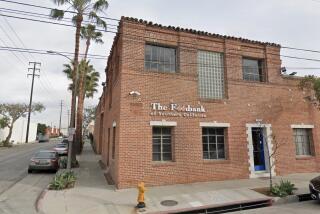Help -- Because Hunger Could Be Right Next Door
âHe whose belly is full believes not him whose belly is empty.â
Thomas Fuller
*
As we approach the holiday season, we look forward to sharing the good times with loved ones and friends. The family get-togethers, capped by generous portions of food and beverage, are the picture that many of us envision. Not so for about 450,000 of our neighbors in Orange County who, sometime each month, miss a meal. We need to think about them too.
Hunger is a social disease that is linked to poverty, so any discussion of hunger is incomplete without a discussion of economics. Often, when we see a person asking for money for food, we think, âWhy donât you get a job?â Itâs not that easy. The Institute for Food and Development Policy, also known as Food First, reports that of the people removed from the government rolls by welfare reform during the late 1990s, only one out of 97 will ever get a job that pays a living wage. At Californiaâs minimum wage of $6.75 per hour, an employee who works 45 hours per week earns less than $16,000 per year. Thereâs no way for a family living in a city to survive on that sum. It doesnât pay the rent and put food on the table, to say nothing of buying clothes and other necessities.
Anuradha Mittal, co-director of Food First, argues that hunger is not caused by a shortage of food. Food Firstâs research shows that the worldâs farmers produce 4.3 pounds of food per person, per day. This includes vegetables, cereals, fish, meat and grains. People are hungry because they are too poor to buy food. There is a shortage of purchasing power, not a shortage of food.
This is where Second Harvest Food Bank of Orange County enters the picture. The Food Bank plays the role of an extender, using its network of 389 member charities in almost every Orange County municipality to distribute food and personal-care items to our neighbors in need. Even though the local jobless rate has fallen slightly, demand for these services continues to grow.
The number of member agencies continues to increase and, in turn, the number of people we serve monthly has increased from 190,000 two years ago to 220,000 in the past year. By providing food and personal-care items (shampoo, toothpaste, toothbrushes, soap, etc.), the Food Bank helps clients save their money for other goods and services. Therefore, while we are a Food Bank, we are also extenders to those in need.
Who are the people being served by our member agencies? Theyâre children, senior citizens and single mothers. Theyâre homeless, temporarily unemployed and disabled. Theyâre veterans, recovering alcoholics and drug addicts. They live in your community. You often pass them on the street. Your children go to school with them. You work with them. They sit next to you in church. Theyâre white, African American, Asian, Native American and Latino. They are recent immigrants to this country because their old country is war-torn and impoverished. Each month they struggle to pay rent and feed their families. Sometimes they go to bed hungry because the food and money for the month has run out. They live in poverty with limited opportunity or hope. They live in your community, but they donât want anyone to know their situation. They are your neighbors and friends.
In addition to hunger, the other major cause for concern is affordable housing. Habitat for Humanity is a wonderful program that has been able to help a number of folks in need. However, the program really isnât equipped to handle mass building projects. This is a problem for local government. Proper planning to include low-cost housing in future developments is a must. The gap between the haves and have-nots continues to widen.
Both of these problems can be solved, but it must start at the local level. Start by finding out the facts. Then help solve the problems by getting involved. You wonât be asked to change your lifestyle or your job. But you could volunteer at a food bank, send a cash donation or give nonperishable food items. You might choose to get involved with a local housing association.
Finally, you could call or write your congressional representatives to see how you can make a difference. As the holidays draw near, let this be your gift to the less fortunate people in our community. Someone needs to get the ball rolling, and it might as well be you.
*
Tom Seeberg is director of Second Harvest Food Bank of Orange County. Information about volunteering is available at (714) 771-1343 or www.feedoc.org.


